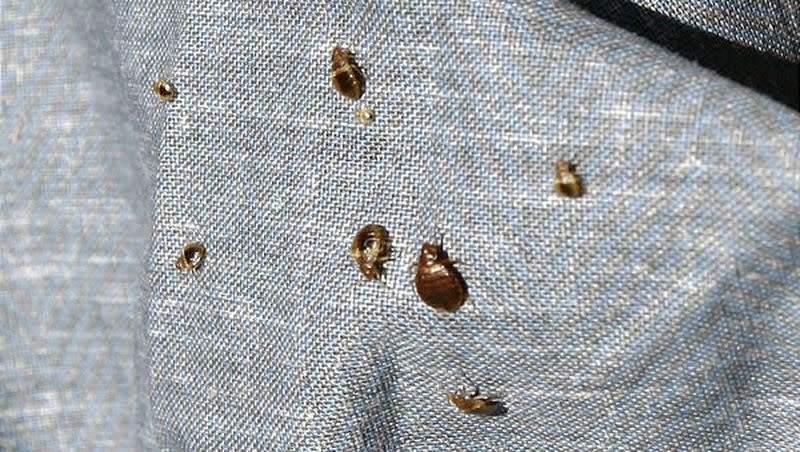Bedbugs 101: Detecting, preventing and eliminating the unwelcome guests

- Oops!Something went wrong.Please try again later.
As Paris sees rises in its tourist season ahead of the 2024 Summer Olympics, one unwanted tourist has made itself feel right at home and has infested the French capital — bedbugs.
The pesky insects were first discovered in homes and hotels during the summer, according to CBS News, but then soon reached movie theaters and public transportation in Paris and now Morocco.
One travel posted to X, formerly known as Twitter, a video of a bedbug spotted on a commuter train.
Même dans le TGV y’a des punaises purée 😪 @OUIGO pensez a désinfecter vos trains, merci pic.twitter.com/PG72erKWLV
— NaNa Afi (@_LaTogolaise) September 22, 2023
“Bedbugs are a public health issue and should be declared as such,” Deputy Mayor of Paris Emmanuel Grégoire wrote to Prime Minister Elisabeth Borne. He called on the government to put together an action plan to address the problem at a national level,” CBS News added.
What are bedbugs?
Bedbugs are small brown blood-sucking insects that are about the size of an apple seed.
Even though they usually feed on blood every week or so, bed bugs are notably tough; they can live for several months and even up to a year without a meal.
“Bedbug bites, which happen mostly at night while you are sleeping, usually don’t cause serious health problems,” according to the Cleveland Clinic.
Adding that they can cause “itchy, tiny bite marks. Treatment includes washing your skin gently with soap and water, applying an anti-itch product and taking an antihistamine (if needed).”
How to spot bedbugs
It’s important to identify bedbugs as quickly as possible because if misidentified, then the infestation could grow and spread from house to house.
Because bedbug bites can be mistaken for other insect bites, the United States Environmental Protection Agency (EPA) advises looking for physical indicators that bedbugs are present when cleaning your house.
Physical signs of bedbugs include:
Red or brownish marks on mattresses or bed linens due to crushed bedbugs.
Dark spots on fabric that could be bedbug waste and could include blood.
Pale yellow, minuscule (around 1mm) eggs and the shed skins of growing nymphs.
Live bedbugs.
Related
Is the ‘scourge of bedbugs’ a threat to the Paris 2024 Olympics?
Breast Cancer Awareness Month 2023: Understanding breast cancer and its impact
Health risks of bedbugs
According to the Centers for Disease Control and Prevention, bedbug bites can affect everyone differently.
“Bite responses can range from an absence of any physical signs of the bite, to a small bite mark, to a serious allergic reaction. Bedbugs are not considered to be dangerous; however, an allergic reaction to several bites may need medical attention,” the CDC said, adding that bedbugs have not been known to spread disease.
How to know if you’ve been bitten
Because bites can look different from person to person, the Cleveland Clinic said there are a few symptoms to look out for:
Slight pain and discomfort.
Itchiness.
Possible burning sensation.
Inflammation in the skin that resembles a pimple or rash.
Bedbugs can bite any part of your body, but they particularly focus on the areas of your skin that touch the bed like the arms, back, legs, neck and face.
How do bedbugs travel?
Oftentimes, bedbugs travel with their infested host.
The insect can originate from areas already infested or from second-hand furniture. They can also latch onto items like luggage, handbags, backpacks, or any other belongings set on soft or cushioned surfaces, according to the New York State Department of Health.
Adding that, they can move from one room to another in multi-unit structures like apartments and hotels.
How to prevent infestation
Bedbugs are experts at hiding in the smallest of places. To avoid infestation, the EPA advises people not to create a lot of clutter in their homes among other precautions:
Check secondhand furniture before bringing it into your home.
Cover mattresses with a protective liner to reduce hiding spots.
Vacuum often to pick up lingering bedbugs.

